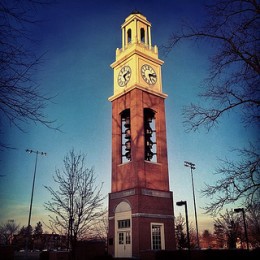From Public University To Tony Country Club

Marian Wang at ProPublica has a telling interview with the former president of Miami University, James Garland. More commonly known as Miami of Ohio, Miami University is a public university that, according to Garland, is “public in name only.” He describes the strategy the university undertook to weather the economic downturn on a diminishing state budget by attracting rich kids from out of state, and the regrets he has in retrospect, despite the financial success of their efforts:
I felt we were handicapped by our state affiliation because the state regulated our tuition charges. So even though we had the market strength and quality of offerings to have higher tuition charges, the state would simply not let us do it. At the same time, the state kept cutting our budget each year. We were hamstrung.
So we ended up trying to recruit more non-residents from outside of Ohio, and package ourselves as a selective, beautiful liberal arts college.
And so to do that, we took advantage of low interest rates for municipal bonds and invested in rehabilitating our residence halls and eating facilities and putting in more recreation — workout rooms and lounges, and the kinds of accouterments that really dressed up a campus and made it a much more comfortable and familiar place for upper-middle class students. So those students started applying to us in droves. Application numbers went up, we became more selective, and the SAT scores of the entering class became higher.
Damn. As dark as it sounds spelled out so clearly like that, it makes a lot of sense.
Garland has some misgivings, though he’s unsure whether he would take it back. He suspects that ultimately the university sacrificed academic rigor (probably should have paid employees more and attracted better teachers), socioeconomic accessibility (who would want to go hang out with all these bozos in North Faces?), and the mission of the public school (hmm yeah how are you serving your population when they can’t get in or afford it?) at the expense of say, making their sports facilities more amazing. He thinks the long-term effects of turning universities into country clubs is contributing to the economic crisis in higher education:
I see a large majority of public universities, the non-flagships, are sort of living hand-to-mouth right now. And they live off their meager state appropriations and their physical plants are getting run down and their faculty are discouraged. I don’t think they’re fulfilling the kind of opportunities that Americans expect from their colleges and universities.
At the other end of public spectrum, the selective publics are just getting more and more and more expensive. And they’re pricing out large segments of the American population.
Ya think?
Photo: archerwl
Support The Billfold
The Billfold continues to exist thanks to support from our readers. Help us continue to do our work by making a monthly pledge on Patreon or a one-time-only contribution through PayPal.
Comments